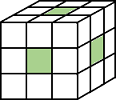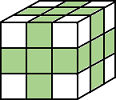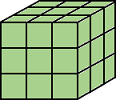bwconncomp
Find and count connected components in binary image
Description
CC= bwconncomp(BW)CCin the binary imageBW. TheCCoutput structure contains the total number of connected components, such as regions of interest (ROIs), in the image and the pixel indices assigned to each component.bwconncompuses a default connectivity of 8 for two dimensions and 26 for three dimensions.
Examples
Input Arguments
Output Arguments
Tips
The functions
bwlabel,bwlabeln, andbwconncompall compute connected components for binary images.bwconncompreplaces the use ofbwlabelandbwlabeln. It uses significantly less memory and is sometimes faster than the other functions.To extract features from a binary image using
regionpropswith default connectivity, just passBWdirectly intoregionpropsusing the commandregionprops(BW).To compute a label matrix having more memory-efficient data type (for instance,
uint8versusdouble), use thelabelmatrixfunction on the output ofbwconncomp.







